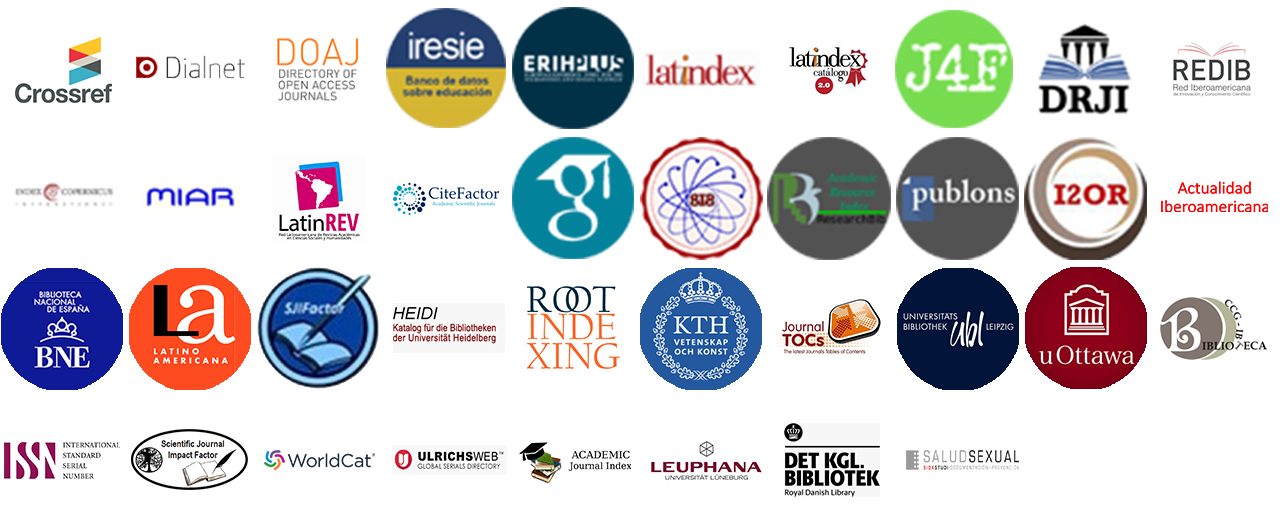Prediction models to detect patients with heart diseases using neural networks and the Pytorch and TensorFlow libraries
DOI:
https://doi.org/10.36825/RITI.12.26.010Keywords:
Heart Disease, Neural Networks, Pytorch, TensorFlow, Prediction ModelsAbstract
Neural Networks are used to generate prediction models aimed at determining whether an individual has heart conditions. The PyTorch and TensorFlow libraries are applied to a dataset of patients related to heart diseases, containing 17 predictor variables. The purpose of this work is to compare the results obtained using the aforementioned libraries with Neural Networks, analyzing the behavior of loss functions and the outcomes from the confusion matrix when creating the prediction model. DownSampling and UpSampling techniques are employed to address the imbalance in the dataset, which consists of a total of 319,795 patients, of whom only 27,373 have heart disease. It was found that for this dataset, the best results with PyTorch are achieved in models of 100 epochs and above, with execution times of only a few seconds, while TensorFlow shows good results starting from models with 10 epochs, though its execution time is considerably longer. An analysis is conducted on the difference in computation time between PyTorch and TensorFlow.
References
Litjens, G., Kooi, T., Ehteshami Bejnordi, B., Adiyoso Setio, A. A., Ciompi, F., Ghafoorian, M., van der Laak, J., van Ginneken, B., Sánchez, C. I. (2017). A survey on deep learning in medical image analysis. Medical Image Analysis, 42, 60-88. https://doi.org/10.1016/j.media.2017.07.005
Poplin, R., Varadarajan, A. V., Blumer, K., Liu, Y., McConnell, M. V., Corrado, G. S., Peng, L., Webster, D. R. (2018). Prediction of cardiovascular risk factors from retinal fundus photographs via deep learning. Nature Biomedical Engineering, 2 (3), 158-164. https://doi.org/10.1038/s41551-018-0195-0
Cood., E. F. (1970). A relational model of data for large shared data banks. Communications of the ACM, 13 (6), 377-387. https://doi.org/10.1145/362384.362685
del Castillo Collazo, N., Contreras Arvizu, J. A., Durán Ortega, A. J. (2024). Uso de las técnicas DownSampling y UpSampling para abordar el desequilibrio de datos en la predicción de personas propensas a sufrir accidentes cerebrovasculares. Revista de Investigación en Tecnología de la Información (RITI), 12 (25), 66-78. https://doi.org/10.36825/RITI.12.25.007
Novac, O. C., Chirodea, M. C., Novac, C. M., Bizon, N., Oproescu, M., Stan, O. P., Gordan, C. E. (2022). Analysis of the Application Efficiency of TensorFlow and PyTorch in Convolutional Neural Network. Sensors, 22, 1-23. https://doi.org/10.3390/s22228872
Pytlak, K. (2022). Indicators of Heart Disease. https://www.kaggle.com/datasets/kamilpytlak/personal-key-indicators-of-heart-disease
Goodfellow, I., Bengio, Y., Courville, A. (2016). Deep Learning. MIT Press.
Murphy, K. P. (2012). Machine Learning: A Probabilistic Perspective. MIT Press.
Paszke, A., Gross, S., Massa, F., Lerer, A., Bradbury, J., Chanan, G., Killeen, T., Lin, Z., Gimelshein, N., Antiga, L., Desmaison, A., Köpf, A., Yang, E., DeVito, Z., Raison, M., Tejani, A., Chilamkurthy, S., Steiner, B., Fang. L., Bai, J., Chintala, S. (2019). PyTorch: An Imperative Style, High-Performance Deep Learning Library. 33rd International Conference on Neural Information Processing Systems, Vancouver BC Canada. https://dl.acm.org/doi/10.5555/3454287.3455008
Abadi, M., Barham, P., Chen, J., Chen, Z., Davis, A., Dean, J., Devin, M., Ghemawat, S., Irving, G., Isard, M., Kudlur, M., Levenberg, J., Monga, R., Moore, S., Murray, D. G., Steiner, B., Tucker, P., Vasudevan, V., Warden, P., Wicke, M., Yu, Y., Zheng, X. (2016). TensorFlow: A system for large-scale machine learning. 12th USENIX conference on Operating Systems Design and Implementation, Savannah, GA, USA. https://dl.acm.org/doi/10.5555/3026877.3026899
Nielsen, M. (2015). Neural Networks and Deep Learning. http://neuralnetworksanddeeplearning.com/
LeCun, Y., Bengio, Y., Hinton, G. (2015). Deep Learning. Nature, 521, 436-444. https://doi.org/10.1038/nature14539
Aldás, J., Uriel, E. (2017). Análisis Multivariante aplicado con R (2da Ed.). Ediciones Paraninfo.
del Castillo Collazo, N. (2020). Predicción en el diagnóstico de tumores de cáncer de mama empleando métodos de clasificación. Revista de Investigación en Tecnología de la Información (RITI), 8 (15), 96-104. https://doi.org/10.36825/RITI.08.15.009
Ashraf, M., Ahmad, S. M., Ganai, N. A., Shah, R. A., Zaman, M., Khan., S. A., Shah. A. A. (2021). Prediction of Cardiovascular Disease Through Cutting-Edge Deep Learning Technologies: An Empirical Study Based on TENSORFLOW, PYTORCH and KERAS. En D. Gupta, A. Khanna, S. Bhattacharyya, A. E. Hassanien, S. Anand, A. Jaiswal (Eds.) International Conference on Innovative Computing and Communications. Advances in Intelligent Systems and Computing (pp. 239-255). Springer. https://doi.org/10.1007/978-981-15-5113-0_18
Hannun, A. Y., Rajpurkar, P., Haghpanahi, M., Tison, G. H., Bourn, C., Turakhia, M. P., Ng, A. Y. (2019). Cardiologist-level arrhythmia detection and classification in ambulatory electrocardiograms using a deep neural network. Nature Medicine, 25, 65-69. https://doi.org/10.1038/s41591-018-0268-3
Rajpurkar, P., Irvin, J., Zhu, K., Yang, B., Mehta, H., Duan, T., Ding, D., Bagul, A., Langlotz, C., Shpanskaya, K., Lungren, M. P., Ng, A. Y. (2017). CheXNet: Radiologist-Level Pneumonia Detection on Chest X-Rays with Deep Learning. arXiv. https://doi.org/10.48550/arXiv.1711.05225
Downloads
Published
How to Cite
Issue
Section
License
Copyright (c) 2024 Revista de Investigación en Tecnologías de la Información

This work is licensed under a Creative Commons Attribution-NonCommercial 4.0 International License.
Esta revista proporciona un acceso abierto a su contenido, basado en el principio de que ofrecer al público un acceso libre a las investigaciones ayuda a un mayor intercambio global del conocimiento.
El texto publicado en la Revista de Investigación en Tecnologías de la Información (RITI) se distribuye bajo la licencia Creative Commons (CC BY-NC
 ), que permite a terceros utilizar lo publicado citando a los autores del trabajo y a RITI, pero sin hacer uso del material con propósitos comerciales.
), que permite a terceros utilizar lo publicado citando a los autores del trabajo y a RITI, pero sin hacer uso del material con propósitos comerciales.



